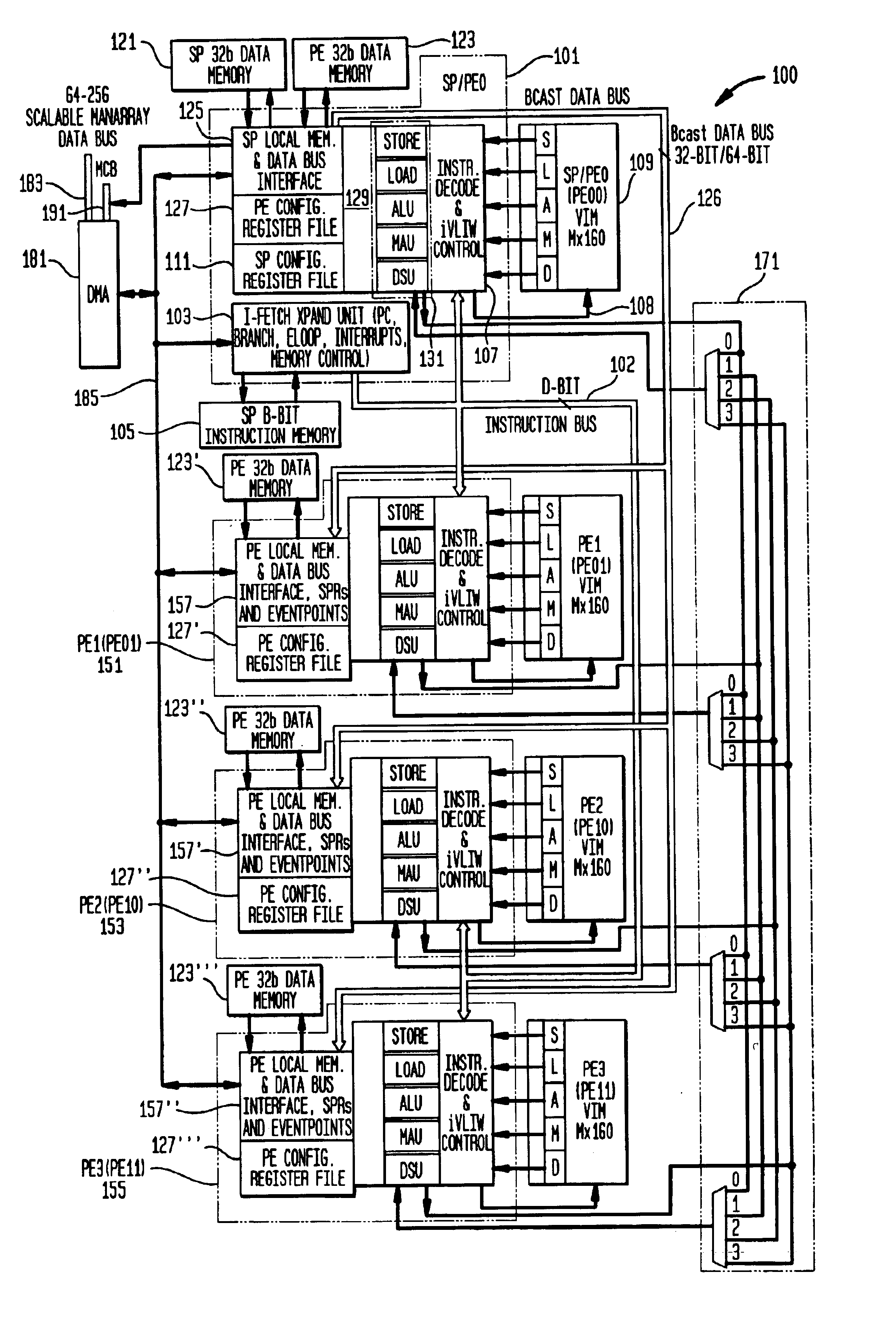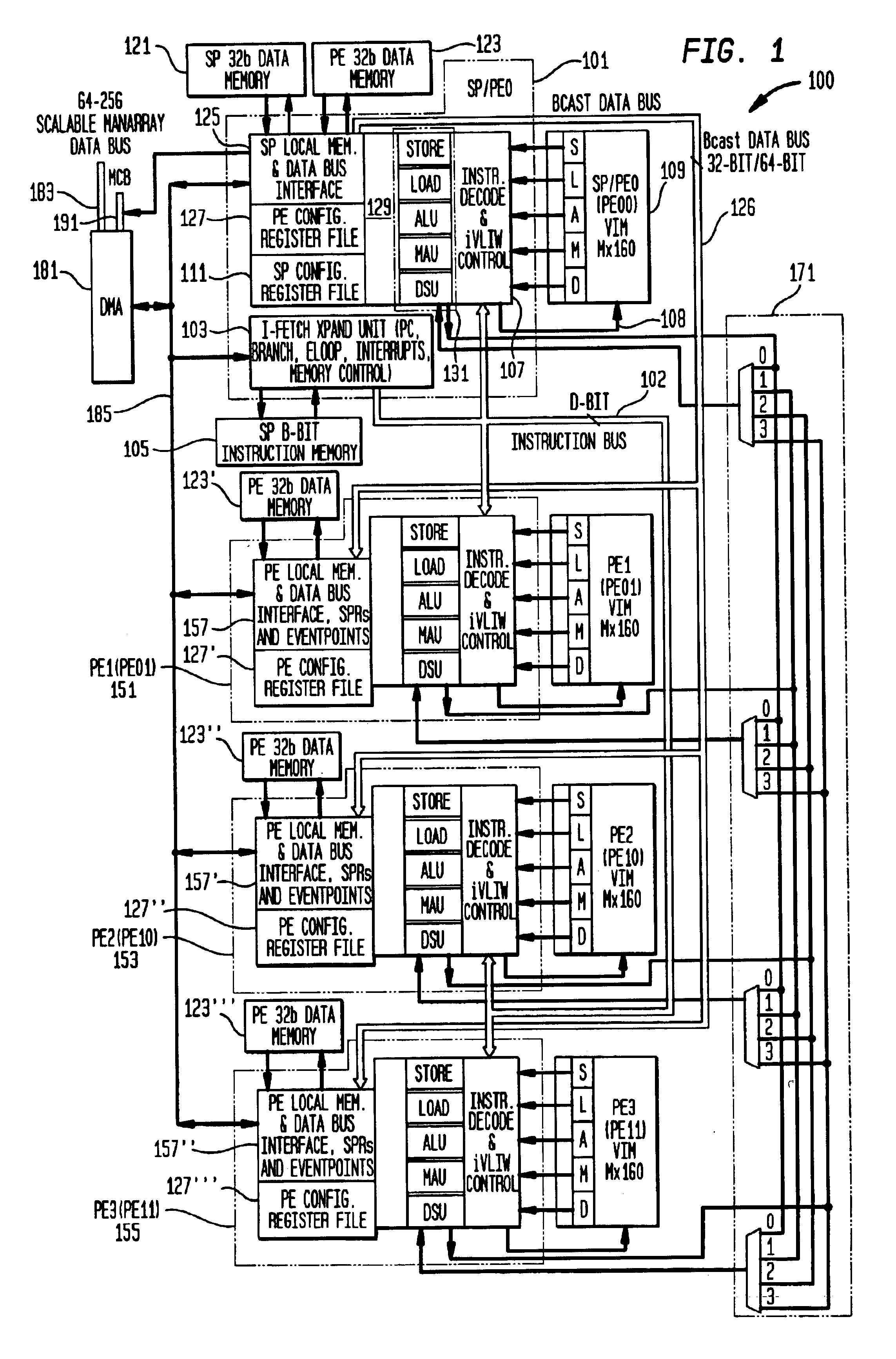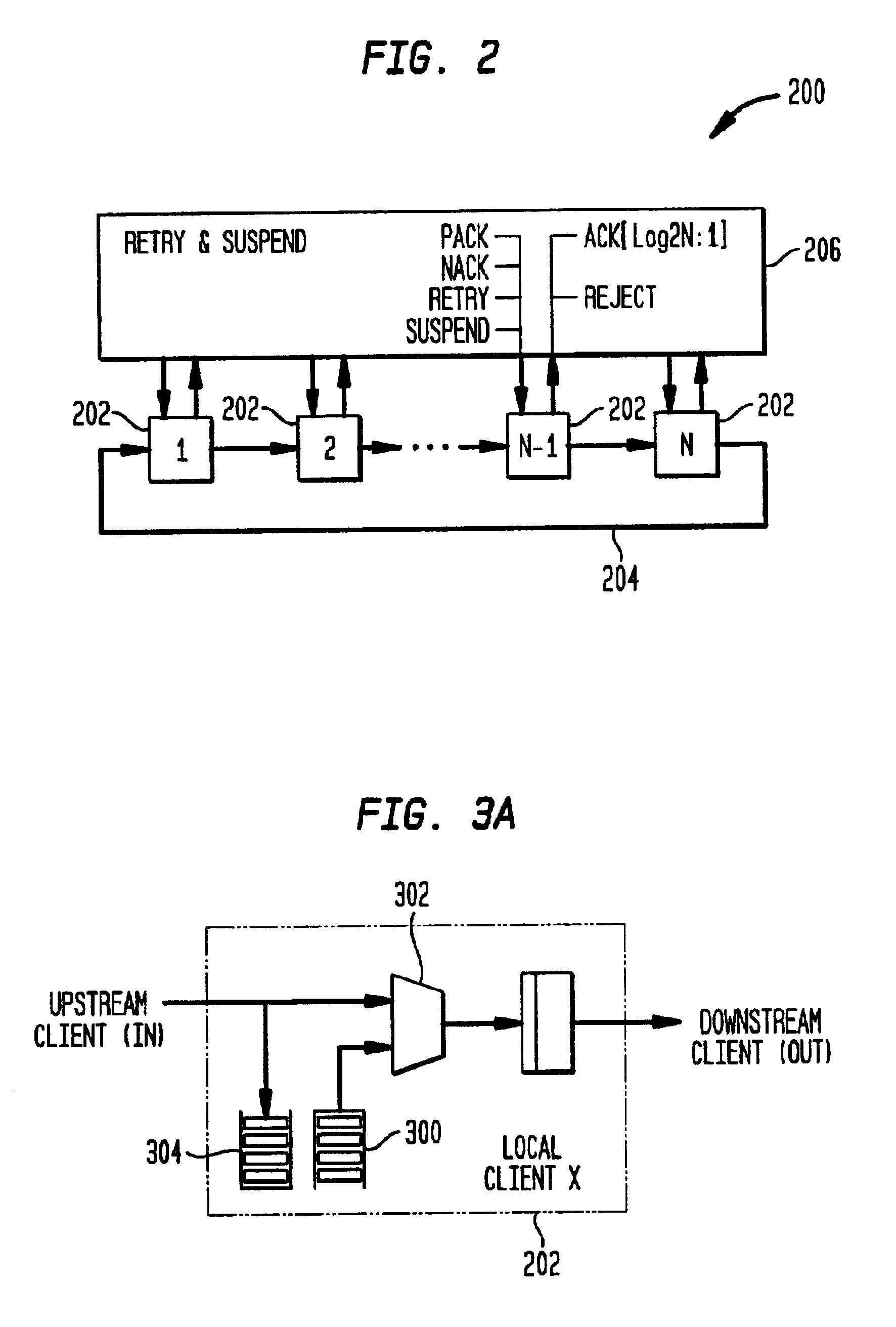Methods and apparatus for pipelined bus
- Summary
- Abstract
- Description
- Claims
- Application Information
AI Technical Summary
Benefits of technology
Problems solved by technology
Method used
Image
Examples
Embodiment Construction
[0034]The present invention now will be described more fully with reference to the accompanying drawings, in which several presently preferred embodiments of the invention are shown. This invention may, however, be embodied in various forms and should not be construed as limited to the embodiments set forth herein. Rather, these embodiments are provided so that this disclosure will be thorough and complete, and will fully convey the scope of the invention to those skilled in the art.
[0035]Further details of a presently preferred ManArray core, architecture, and instructions for use in conjunction with the present invention are found in: U.S. patent application Ser. No. 08 / 885,310 filed Jun. 30, 1997, now U.S. Pat. No. 6,023,753; U.S. patent application Ser. No. 08 / 949,122 filed Oct. 10, 1997, now U.S. Pat. No. 6,167,502; U.S. patent application Ser. No. 09 / 169,256 filed Oct. 9, 1998, now U.S. Pat. No. 6,167,501; U.S. patent application Ser. No. 09 / 169,255 filed Oct. 9, 1998, now U.S...
PUM
 Login to View More
Login to View More Abstract
Description
Claims
Application Information
 Login to View More
Login to View More - R&D
- Intellectual Property
- Life Sciences
- Materials
- Tech Scout
- Unparalleled Data Quality
- Higher Quality Content
- 60% Fewer Hallucinations
Browse by: Latest US Patents, China's latest patents, Technical Efficacy Thesaurus, Application Domain, Technology Topic, Popular Technical Reports.
© 2025 PatSnap. All rights reserved.Legal|Privacy policy|Modern Slavery Act Transparency Statement|Sitemap|About US| Contact US: help@patsnap.com



